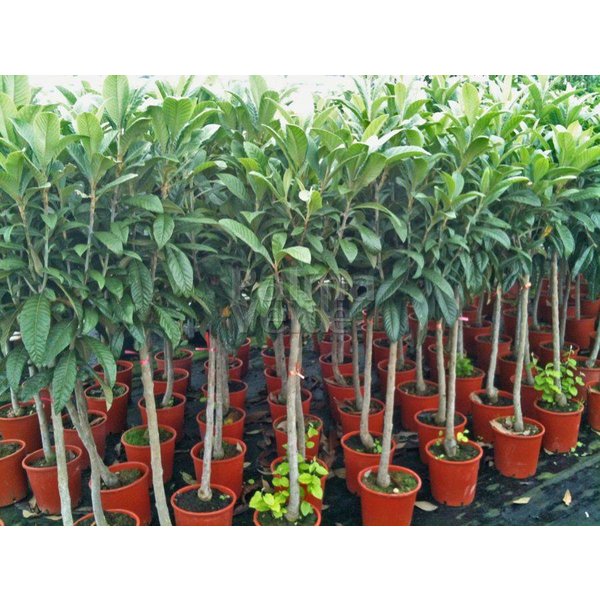Eriobotrya Japonica / Eriobotrya Japonica Architectural Plants
De Japanse Mispel is een exotische fruitboom die wintergroen is dit houd in dat het blad er niet afvalt in de winter maar aan de boom blijft zitten. Eriobotrya japonica Japanese Loquat is a large evergreen shrub or small rounded tree with handsome leathery-textured leaves up to 8 in.

Eriobotrya Japonica Loquat Japanse Wolmispel Palma Verde Exoten V O F
China Japan A rare but increasing alien.

Eriobotrya japonica. Stem Cutting Country Or Region Of Origin. This plant will provide nectar and pollen for bees and the many other types of pollinating insects. Eriobotrya japonica Common Loquat is a plant whose fruits are commonly consumed for their taste and other parts seeds leaves flowers used in traditional chinese medicine for treatment of cough and respiratory distress.
Eriobotrya japonica is often spread in dumped vegetation. Heeft in Nederland en België eigenlijk altijd wel winterbescherming nodig maar kan natuurlijk ook goed als kuipplant worden gehouden en s winters op een plek overwinteren. Snoeien doet u het beste in de late zomer.
Tropical or subtropical areas Wildlife Value. Is ook bekend onder de naam loquat. Eriobotrya japonica-- Loquat Page 3 Other Figure 3.
In the Mediterranean youll see it mostly grown as a fruit tree. It is generally noted for its compact size attractive foliage fragrant flowers and edible fruit. Woody Recommended Propagation Strategy.
It is hardy to zone UK 7. Flowers attract hummingbirds and bees. The merger of Eriobotrya and Rhaphiolepis is supported by recent DNA analyses which would cause this species to adopt the name Rhaphiolepis bibas.
The loquat Eriobotrya japonica is a wonderful tree ideally suited to small gardens. It has also been proposed to conserve the name Eriobotrya due to its wide use for the loquat against Rhaphiolepis. Eriobotrya japonica Loquat or Nespilo What a wonderful useful reliable little tree this is and amazingly little known.
Delicious little apricotish orange fruit famous for being the first ripe fruit of the summer. It also often grows as a large spreading shrub. Eriobotrya japonica commonly called loquat Japanese medlar or Japanese plum is a small short-trunked upward-branching broadleaf evergreen tree that typically grows to 10-25 tall with a round form.
Eriobotrya japonica of Japanse Wolmispel of Loquat is een exotische en groenblijvende fruitboom die kan bloeien met witte bloemen. The leaves of E. Eriobotrya japonica of Japanse wolmispel is een sierlijke plant en komt uit Noord China en Japan.
Eriobotrya japonica geeft eetbare vruchten maar deze worden alleen goed rijp in warme zomers en als de zeer vroege bloesem niet is aangetast door vorst. Veiny and toothed the foliage is dark-green and glossy on the upper surface whitish-or rusty-hairy underneath. Not particularly outstanding Invasive.
Light sandy medium loamy and heavy clay soils and prefers. In warmer climes such as the Mediterranean its grown for the tasty spring fruits. It is in leaf all year in flower from November to March and the seeds ripen from April to June.
Large terminal panicles up to 6 in. Probably first found in the wild in Belgium in 2000 in the Antwerp port area. Eriobotrya japonica Thunb Lindl also known as loquat belongs to the Rosaceae plant family and is a semitropical fruit tree widely distributed in Southeastern China.
Mits een goede standplaats en beschutting kan de plant in het vroege voorjaar bloeien en enkele maanden later. Eriobotrya japonica Japanese Loquat or Medlar The Loquat is a small evergreen winter hardy tree with impressive large dark green foliage giving an almost tropical or exotic look to your garden. The foliage is particularly distinctive with large evergreen leaves borne in spurts of fresh green and a dusty coating that gradually sloughs off as the leaves age.
From Wikimedia Commons the free media repository. Tree has winter interest due to unusual form nice persistent fruits showy winter trunk or winter flowers Outstanding tree. De Eriobotrya japonica word ook wel de Loquat of Japanse Mispel genoemd.
Deze plant wordt niet veel hoger dan 3 tot 4 meter. Eriobotrya japonica Common Loquat is a plant whose fruits are commonly consumed for their taste and other parts seeds leaves flowers used in traditional chinese medicine for treatment of cough and respiratory distress. Eriobotrya japonica Japanse mispel is een exotische fruitboom die in de winter groenblijvend is.
Eriobotrya japonica Thunb Lindl. Eriobotrya japonica is an evergreen Tree growing to 9 m 29ft by 5 m 16ft at a medium rate. Jump to navigation Jump to search.
RHS Plants for Pollinators plants. Gardens wastelands and plantations are common seed sources Weeds of New Zealand 2016. De Japanse mispel komt van oorsprong voor in China en Japan.
It produces small white flowers and fruit in some milder parts of the UK but is. Eriobotrya japonica F The RHS Award of Garden Merit AGM helps gardeners choose the best plants for their garden. It appears to be rich in ursolic acid like triterpenoids.
Eriobotrya japonica Japanse mispel Tijdelijk niet beschikbaar Inloggen. Eriobotrya japonica is te koop in onze webshop. The species is hermaphrodite has both male and female organs and is pollinated by Insects.
De Tuinen van Appeltern. Japonica have been consumed commonly as a prevalent tea and a traditional Chinese medicine for the treatment of diabetes chronic bronchitis asthma pain cough and inflammation Chen Long et al 2017. It appears to be rich in ursolic acid like triterpenoids.
De Japanse mispel of wolmispel is een bijzondere groenblijvende warmteminnende fruitsoort die geschikt is als kuipplant of voor volle grond in beschutte warme tuinen. Long 15 cm of 30 to 100 sweetly fragrant five-petaled white flowers are produced in. Eriobotrya japonica has been intentionally introduced and widely grown in cultivation for its edible fruits USDA-ARS 2018.
18 rows Eriobotrya is a genus of flowering plants mostly large evergreen shrubs and small trees in. Tevens kan de Eriobotrya japonica in een kuip gehouden worden hij verdraagt snoei zonder problemen. In het vroege voorjaar bloeit de Eriobotrya japonica met witte bloemen.
Scattered young plants were found on the unloading quay of the Cargill plant adjacent to the Kanaaldok Verloove 2003 where it was apparently introduced as animal feed. Surface roots are usually not a problem Winter interest. We call them Loquats Nespolo in Italy and Nispero in.
De boom wordt tot 4 à 5 m hoog en is matig winterhard tot -10-12 graden Celsius. De bijzondere fruitsoort Eriobotrya japonica of Japanse mispel.
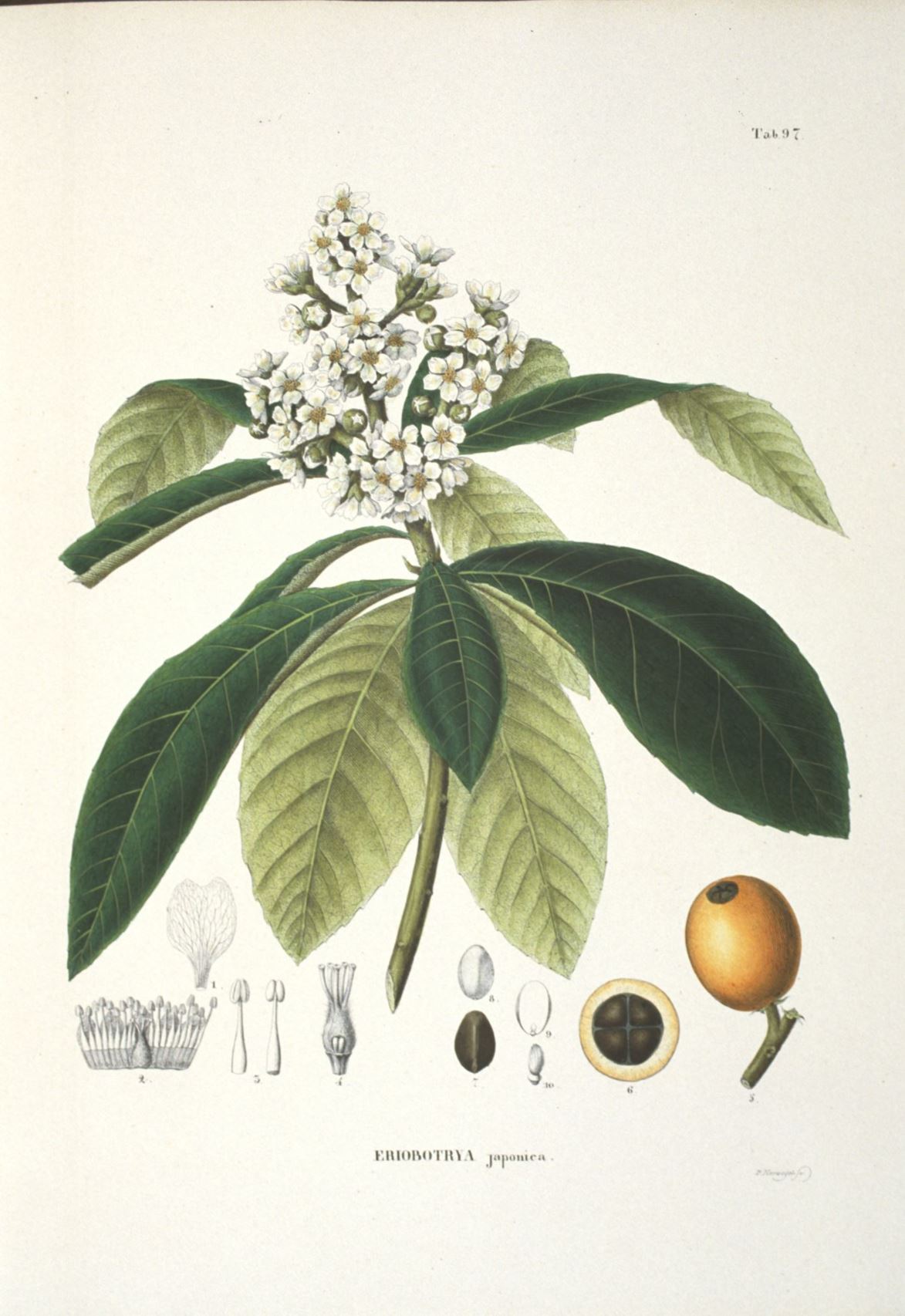
Eriobotrya Japonica Japanse Mispel Loquat Hortus Botanicus Leiden Netherlands

Eriobotrya Japonica Loquat Green Id
Japanse Wolmispel Eriobotrya Japonica Mijntuin Org

Boom Met Heerlijke Vruchten Eriobotrya Japonica Japanse Mispel Loquat Florera

Eriobotrya Japonica Loquat Bbc Gardeners World Magazine
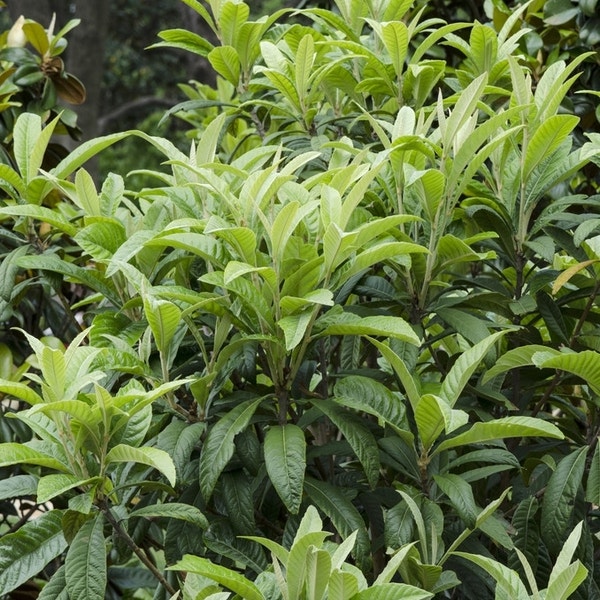
Japanse Mispel Eriobotrya Japonica Directplant
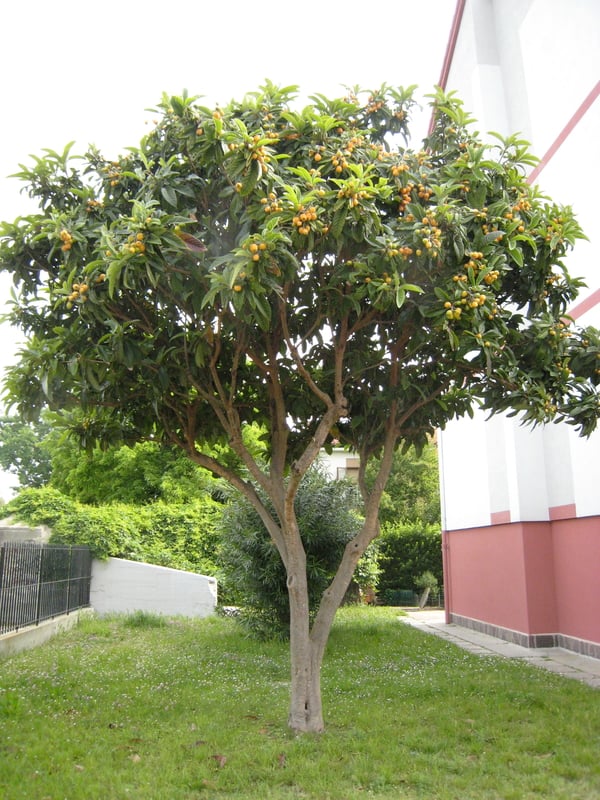
Eriobotrya Japonica Architectural Plants
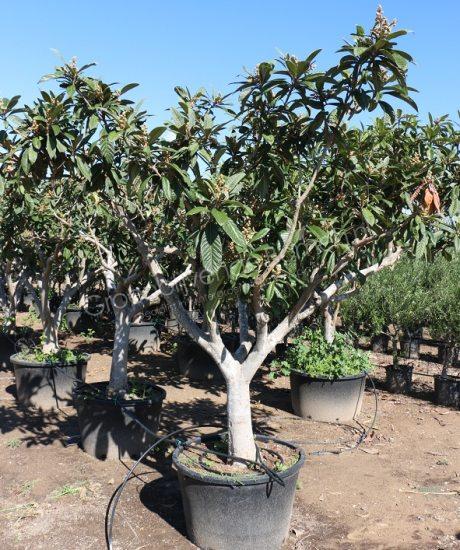
Eriobotrya Japonica Overige Bomen Productinformatie Overige Bomen Olijfboomspecialist Overloon
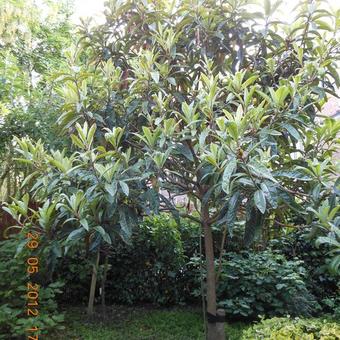
Loquat Japanse Wolmispel Neffel Eriobotrya Japonica

Eriobotrya Japonica Japanse Mispel De Tuinen Van Appeltern
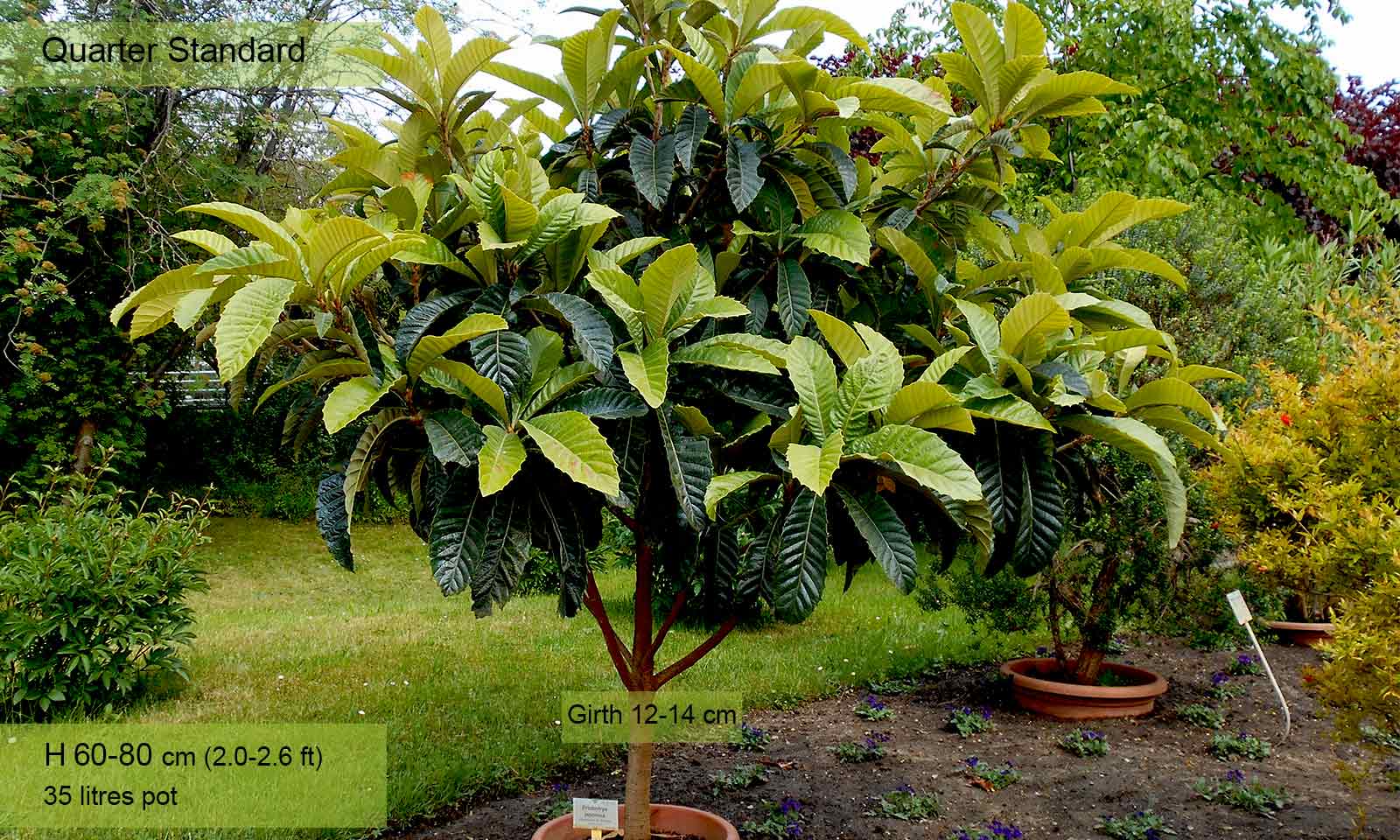
Eriobotrya Japonica Loquat Tree Quarter Standard Garden Plants Online

Picture Of A Loquat Variety Seventh Star Eriobotrya Japonica Download Scientific Diagram

Jonge Japanse Mispel Eriobotrya Japonica Amitis Living Nature
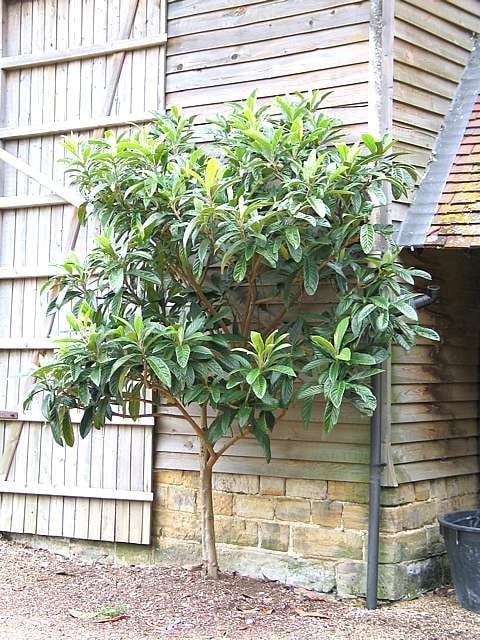
Eriobotrya Japonica Architectural Plants

Eriobotrya Japonica Plantentuin Esveld

Eriobotrya Japonica Commonly Called Japanese Loquat Download Scientific Diagram

Japanse Wolmispel Eriobotrya Japonica Kopen

